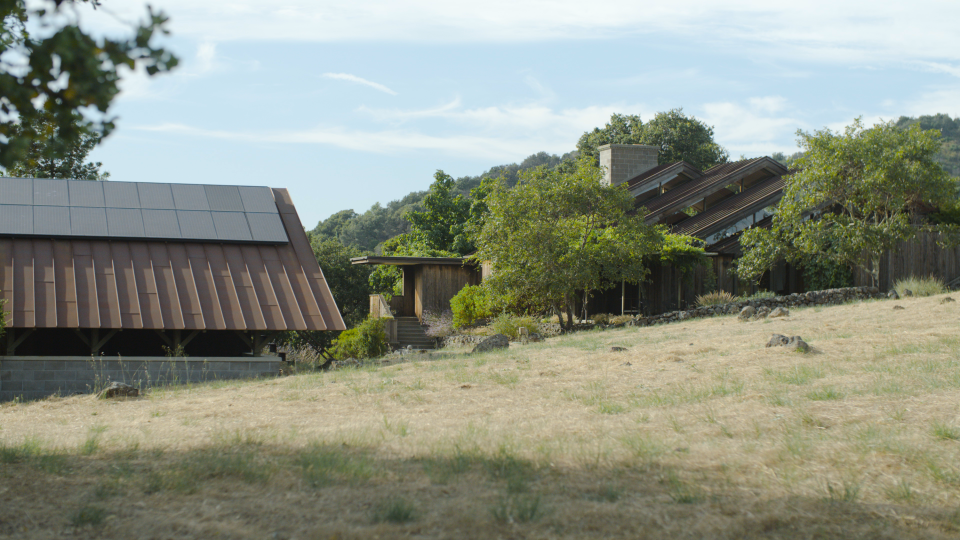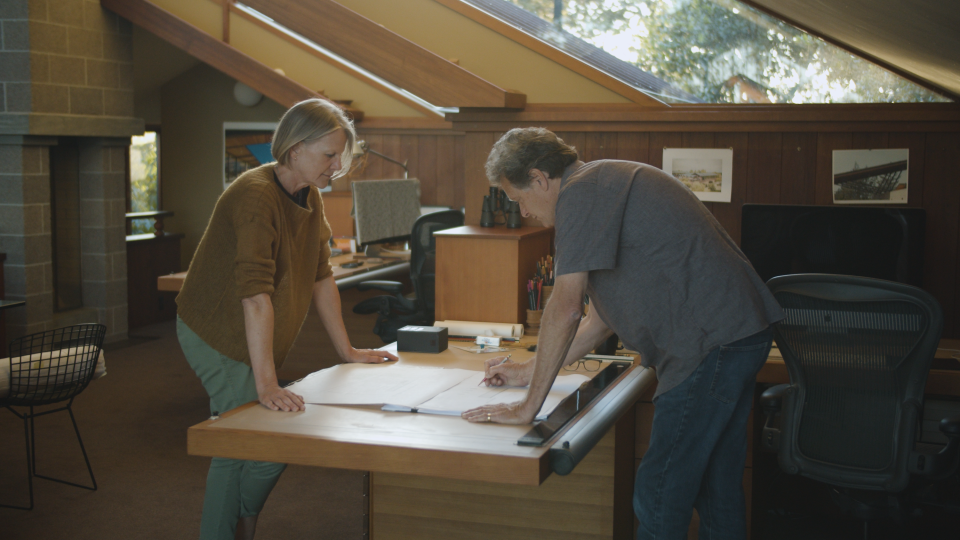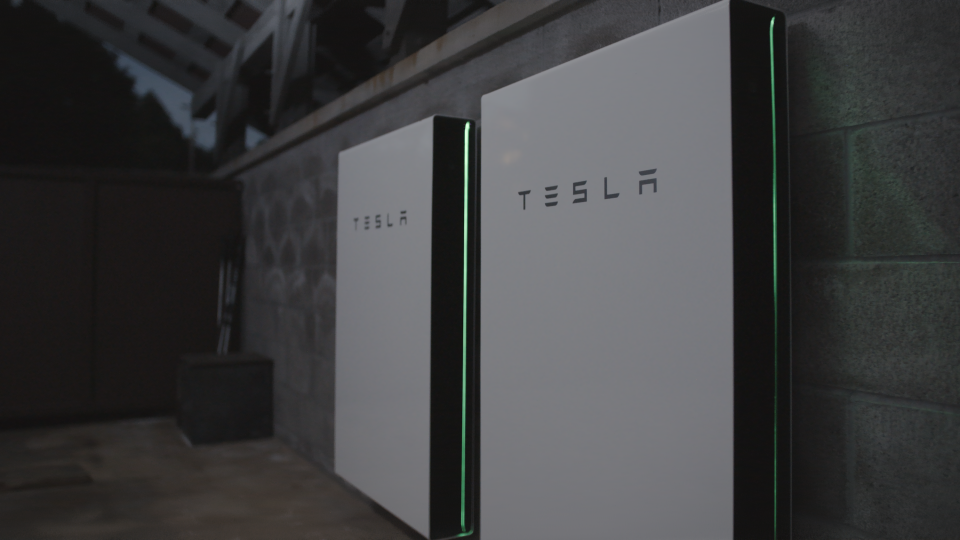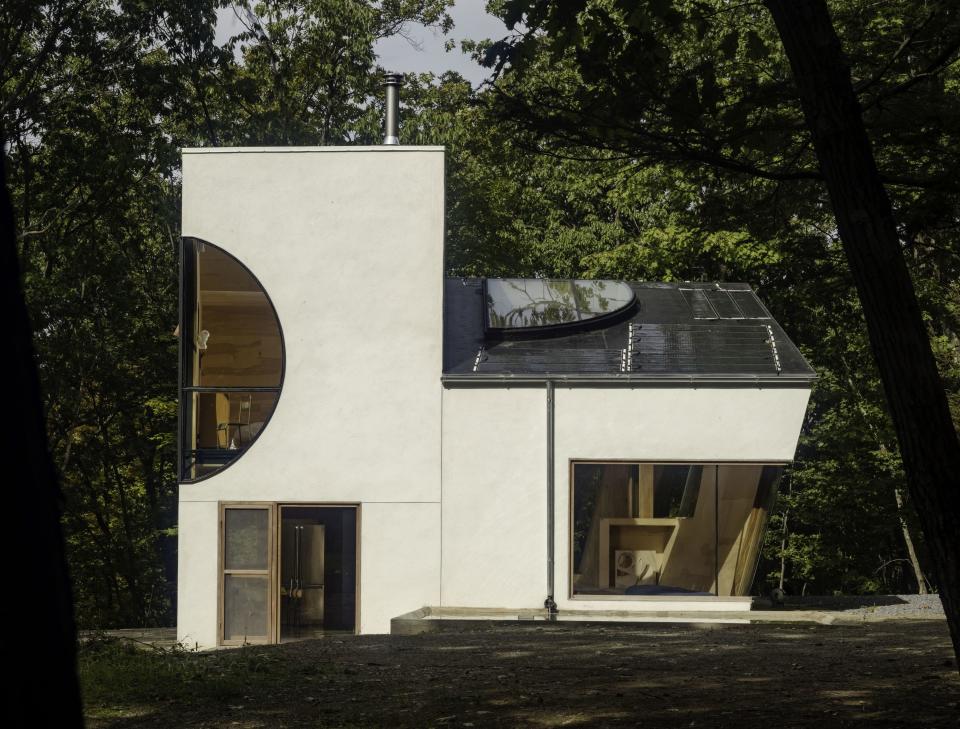Two Architects Rebuilt Their Home to Withstand California Power Outages—And Others Are Following Suit
For so long, the phrase “off the grid” conjured a kind of countercultural connotation—the stuff of hippies and recluses opting to live beyond the reach of modern infrastructure. But more and more people otherwise fully enmeshed in all the electronic and digital trappings of 21st-century life are beginning to question their dependence on the grid, turning to emerging technologies that rely less on traditional energy infrastructure. Their rationale is less about making a cultural statement and more about finding safer, more reliable, and less expensive ways of keeping the lights turned on.
American homeowners have long taken for granted the idea that a simple flip of the switch can dependably power a house and the ever-growing inventory of appliances and gadgets plugged into the walls, floors, and ceilings. Where that power comes from, though, tends to be less well understood. It gets called “the grid,” which makes it seem both harmless and guaranteed, but that grid is, in fact, a vast patchwork of mechanical bits and pieces—wires, cables, tubes, bolts, tunnels, and towers—which, like any human-made construction, can fail.

Take the 2018 Camp Fire, for example. California’s deadliest and costliest fire. It killed 86 people when it ravaged vast swaths of Butte County (just north of Sacramento)—and, as investigators have recently determined, it was caused by a faulty hook on a 100-year-old utility pole, which let drop a live wire into the bone-dry tinderbox of Sacramento Valley. Faced with a mountainous stack of liability claims from the Camp Fire and looking to avoid such claims in the future, a California utility company, PG&E, recently announced a sweeping new protocol—what it calls the Public Safety Power Shutoff—that will cut electrical supplies when aridity and wind heighten fire risks. So, for the 16 million Californians who get electricity from PG&E, the lights could go out because of wind gusts and dryness, even when those conditions happen hundreds of miles away. That kind of uncertainty has utility customers looking for alternatives.
Amy Nielsen and Richard Schuh, the husband-and-wife founders of the Sonoma-based architecture firm Nielsen Schuh, live and work from a house tucked away in the Mayacamas Mountains. In October 2017, one year before the Camp Fire, the so-called Tubbs Fire tore through Northern California, burning nearly 40,000 acres, including the area immediately around Nielsen and Schuh’s house. As Schuh recalls, “We were up there alone, the air was hard to breathe, and we could hear the fire—it sounded like train engines coming at us—and we thought, ‘This is it.’”

Thanks to a crew of firefighters who arrived just in time, that was not it, but in picking up the pieces after the smoke had cleared, Nielsen and Schuh made some changes. Like their neighbors, they were without power before, during, and after the blaze. “Many of our neighbors bought generators,” says Schuh, “but these are noisy, they put out carbon dioxide, and they run out of fuel pretty quickly.”

Nielsen and Schuh chose a different approach, incorporating a Tesla Powerwall battery into the house. In the 1990s, they had included a rooftop photovoltaic array to cut down on grid-based energy use, but until recently, this had its limits. During the day, solar panels make more energy than they need to; at night, they don’t create energy at all. Until recently, there was no way to store the day’s excess energy for later use.
Now, however, innovations in batteries and energy storage have bridged that gap, allowing solar energy to provide power, even during times of darkness and utility outage. By storing surplus solar energy by day and modulating its release over time, these batteries provide energy without being fully dependent on an energy grid. For many architects and clients, this new approach is not just about emergency preparedness—it makes sense for everyday year-round use.

When Steven Holl designed a house in Rhinebeck, New York, for example, he included photovoltaic SoloPower film on the roof. These cells are linked to Sonnen batteries, which allow the building to be energy-independent. As California enters its high-risk season for fires, Schuh remarks how energy shutoffs are a big subject of conversation and source of concern in their community. The fire risk is there, but about the planned shutoffs, he says, “now, we don’t have that fear.”
Originally Appeared on Architectural Digest

